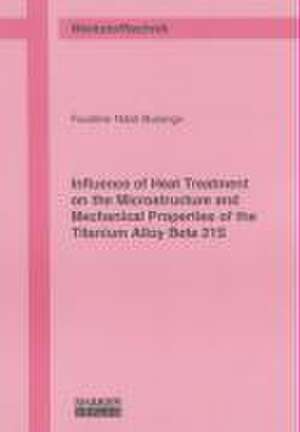Influence of Heat Treatment on the Microstructure and Mechanical Properties of the Titanium Alloy Beta 21S
Autor Faustine Ndali Busongoen Limba Engleză Paperback – 30 noi 2005
Preț: 259.74 lei
Nou
Puncte Express: 390
Preț estimativ în valută:
49.71€ • 51.60$ • 41.45£
49.71€ • 51.60$ • 41.45£
Carte indisponibilă temporar
Doresc să fiu notificat când acest titlu va fi disponibil:
Se trimite...
Preluare comenzi: 021 569.72.76
Specificații
ISBN-13: 9783832246433
ISBN-10: 3832246436
Pagini: 130
Ilustrații: 59 schwarz-weiße Abbildungen
Dimensiuni: 149 x 210 x 9 mm
Greutate: 0.19 kg
Editura: Shaker Verlag
ISBN-10: 3832246436
Pagini: 130
Ilustrații: 59 schwarz-weiße Abbildungen
Dimensiuni: 149 x 210 x 9 mm
Greutate: 0.19 kg
Editura: Shaker Verlag
